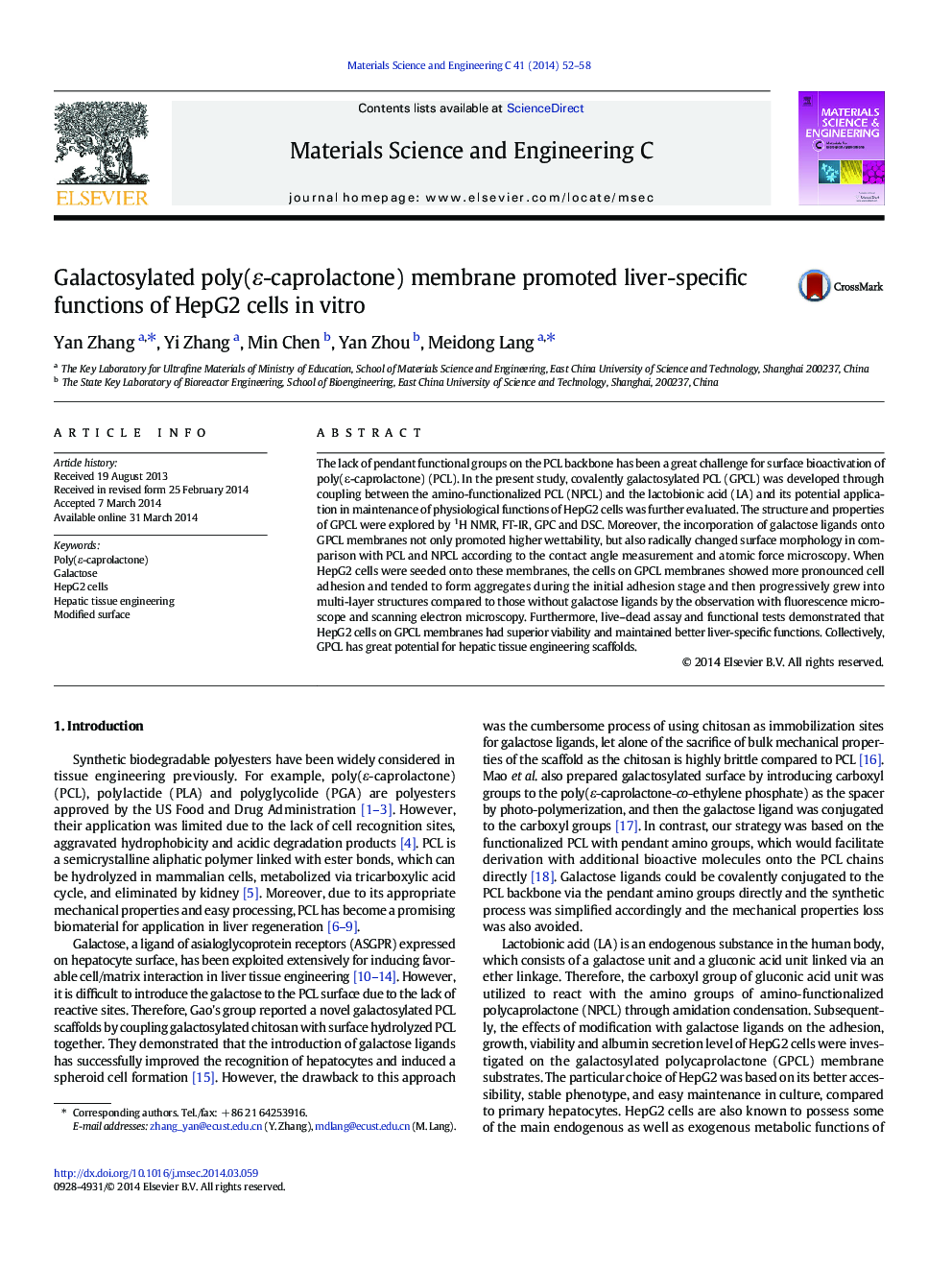| Article ID | Journal | Published Year | Pages | File Type |
|---|---|---|---|---|
| 1428715 | Materials Science and Engineering: C | 2014 | 7 Pages |
•The specific recognition between the galactose ligands on the galactosylated poly(ε-caprolactone) membrane and the ASGPR on the HepG2 cell surface.•The galactosylated poly(ε-caprolactone) membranes improved the cell-matrix interaction.•The galactosylated functionalized PCL scaffold is a potential candidate for liver tissue engineering.
The lack of pendant functional groups on the PCL backbone has been a great challenge for surface bioactivation of poly(ε-caprolactone) (PCL). In the present study, covalently galactosylated PCL (GPCL) was developed through coupling between the amino-functionalized PCL (NPCL) and the lactobionic acid (LA) and its potential application in maintenance of physiological functions of HepG2 cells was further evaluated. The structure and properties of GPCL were explored by 1H NMR, FT-IR, GPC and DSC. Moreover, the incorporation of galactose ligands onto GPCL membranes not only promoted higher wettability, but also radically changed surface morphology in comparison with PCL and NPCL according to the contact angle measurement and atomic force microscopy. When HepG2 cells were seeded onto these membranes, the cells on GPCL membranes showed more pronounced cell adhesion and tended to form aggregates during the initial adhesion stage and then progressively grew into multi-layer structures compared to those without galactose ligands by the observation with fluorescence microscope and scanning electron microscopy. Furthermore, live–dead assay and functional tests demonstrated that HepG2 cells on GPCL membranes had superior viability and maintained better liver-specific functions. Collectively, GPCL has great potential for hepatic tissue engineering scaffolds.
Graphical abstractThe specific recognition between the galactose ligands on the galactosylated poly(ε-caprolactone) membrane and the ASGPR on the HepG2 cell surface. The galactosylated poly(ε-caprolactone) membranes improved the cell-matrix interaction. The galactosylated functionalized PCL scaffold is a potential candidate for liver tissue engineering.Figure optionsDownload full-size imageDownload as PowerPoint slide
